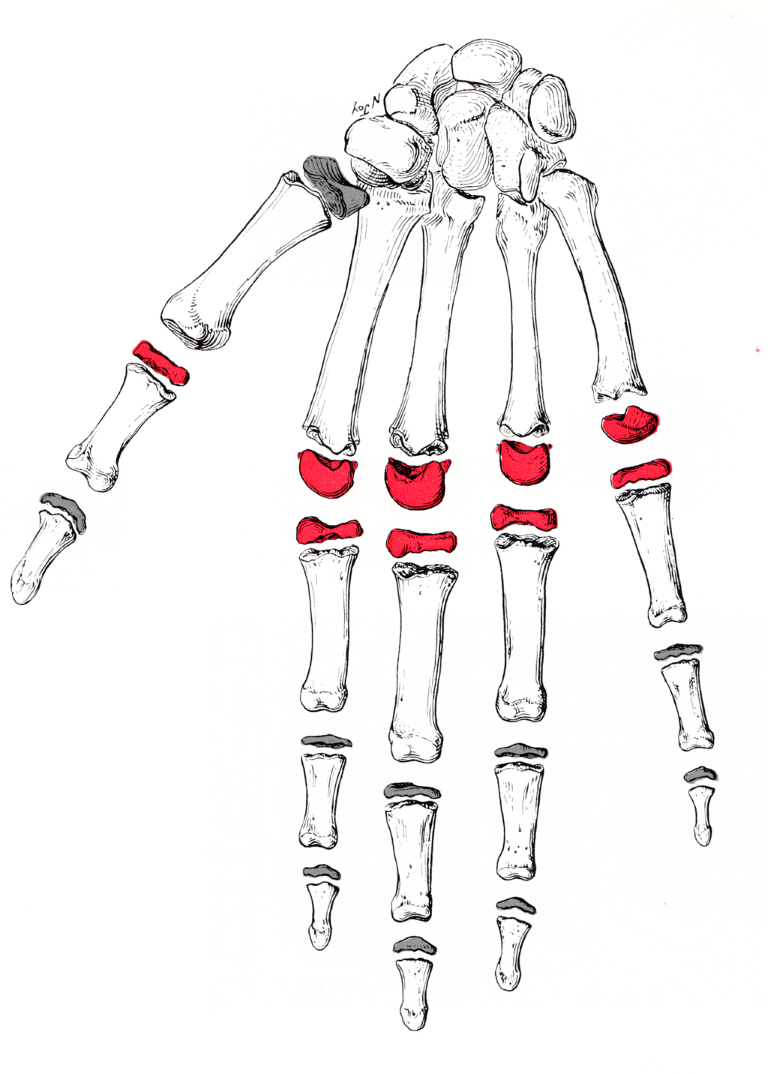◔
Metacarpophalangeal Joint: Difference between revisions
From WikiMSK
No edit summary |
No edit summary |
||
| Line 1: | Line 1: | ||
{{Joint | {{Joint | ||
|quality=Stub | |quality=Stub | ||
|image=Grant MCP.png | |||
|type=Synovial Joint | |type=Synovial Joint | ||
|secondary-type=Condyloid Joint | |secondary-type=Condyloid Joint | ||
| Line 9: | Line 10: | ||
|conditions=Hitchhiker Thumb Deformity | |conditions=Hitchhiker Thumb Deformity | ||
}} | }} | ||
The metacarpophalangeal joints (MCP) are condyloid joints situated between the metacarpal bones and the proximal phalanges of the fingers. The are formed by the reception of the rounded heads of the metacarpal bones into shallow cavities on the proximal ends of the proximal phalanges. The condyloid formation allows the movements of flexion, extension, abduction, adduction and circumduction. | |||
Arthritis of the MCP is a distinguishing feature of [[Rheumatoid Arthritis]], as opposed to the distal interphalangeal joint in [[Osteoarthritis]]. | |||
[[Category:Hand and Wrist Anatomy]] | [[Category:Hand and Wrist Anatomy]] | ||
Revision as of 21:39, 3 April 2022
This article is a stub.

| |
| Metacarpophalangeal Joint | |
|---|---|
| Primary Type | Synovial Joint |
| Secondary Type | Condyloid Joint |
| Bones | Metacarpal, Proximal Phalanx (Hand) |
| Ligaments | Capsule, two collateral ligaments, palmar (volar) ligament |
| Muscles | |
| Innervation | Digital nerves from the ulnar and median nerves |
| Vasculature | Deep digital arteries from the superficial palmar arch |
| ROM | |
| Volume | |
| Conditions | Hitchhiker Thumb Deformity |
The metacarpophalangeal joints (MCP) are condyloid joints situated between the metacarpal bones and the proximal phalanges of the fingers. The are formed by the reception of the rounded heads of the metacarpal bones into shallow cavities on the proximal ends of the proximal phalanges. The condyloid formation allows the movements of flexion, extension, abduction, adduction and circumduction.
Arthritis of the MCP is a distinguishing feature of Rheumatoid Arthritis, as opposed to the distal interphalangeal joint in Osteoarthritis.

